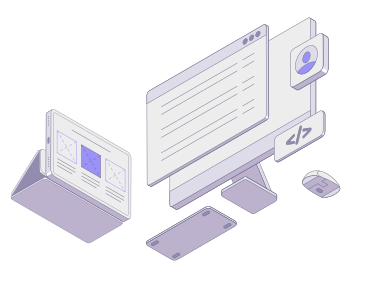




Why Responsive Web Design is Crucial for Your Website
In today’s digital age, users access websites from a myriad of devices with varying screen sizes and resolutions. Ensuring that your website looks and functions well on all these devices is no longer a luxury but a necessity. This is where responsive web design comes into play. At Masthead Technology, we prioritize responsive web design in all our projects, and here’s why it’s crucial for your website.
Enhanced User Experience
Seamless Browsing Across Devices
Responsive web design ensures that your website adapts to different screen sizes, providing a seamless browsing experience. Whether users are accessing your site from a desktop, tablet, or smartphone, they will encounter a consistent and user-friendly interface. This adaptability is key to meeting the diverse needs of today’s internet users.
Reduced Bounce Rates
A website that doesn’t function well on mobile devices can frustrate users, leading to higher bounce rates. Responsive design improves usability, keeping visitors on your site longer and encouraging them to explore more pages. When users can easily navigate your site and find what they’re looking for, they’re more likely to stay engaged.
Improved SEO Rankings
Google’s Mobile-First Indexing
Google now uses mobile-first indexing, meaning it predominantly uses the mobile version of the content for indexing and ranking. A responsive website is more likely to rank higher in search engine results, as it provides a better mobile experience. This shift emphasizes the importance of having a site that works well on mobile devices.
Single URL for All Devices
With responsive design, you maintain a single URL for both desktop and mobile versions of your site. This simplifies your SEO efforts by consolidating your traffic and backlinks, leading to better search engine performance. Having a single URL ensures that all of your SEO value is directed to one place, rather than being split between multiple versions of your site.
Cost and Time Efficiency
Single Site Maintenance
Maintaining separate desktop and mobile versions of a website can be time-consuming and costly. Responsive design eliminates the need for multiple versions, streamlining updates and maintenance efforts. With one site to manage, you can save both time and money, allowing you to focus on other important aspects of your business.
Future-Proofing Your Website
As new devices with varying screen sizes and resolutions are introduced, a responsive website will automatically adapt, reducing the need for frequent redesigns. This adaptability ensures that your site remains functional and aesthetically pleasing across all current and future devices.
Increased Conversion Rates
Consistent User Experience
A responsive website ensures that users have a consistent experience, regardless of the device they use. This consistency builds trust and makes it easier for users to navigate and complete actions, such as making purchases or filling out forms. A unified experience across devices is crucial for maintaining user satisfaction and encouraging conversions.
Optimized for Touch and Click
Responsive design not only resizes the layout but also optimizes elements like buttons and navigation for touchscreens. This makes it easier for mobile users to interact with your site, leading to higher conversion rates. By ensuring that your site is easy to use on all devices, you can improve user engagement and drive more conversions.
Better Analytics and Reporting
Unified Analytics
With a single responsive site, tracking user behavior and gathering insights is simplified. You can analyze traffic and user engagement more accurately without having to reconcile data from separate desktop and mobile sites. Unified analytics provide a clearer picture of how users interact with your site, making it easier to identify areas for improvement.
Improved Decision Making
Unified analytics help you make better-informed decisions about your website’s design and content, optimizing the user experience and enhancing overall performance. By understanding how users interact with your site, you can make data-driven decisions that improve user satisfaction and drive business success.
Conclusion
Responsive web design is essential in today’s multi-device world. It enhances user experience, improves SEO rankings, saves time and costs, boosts conversion rates, and simplifies analytics and reporting. At Masthead Technology, we integrate responsive design into all our projects to ensure your website meets the demands of the modern web. Contact us today to learn how we can help create a responsive website that drives results and keeps your users engaged.
FAQs
What is responsive web design? Responsive web design ensures that a website adapts to various screen sizes and devices, providing a seamless user experience.
Why is responsive web design important for SEO? Google’s mobile-first indexing prioritizes mobile-friendly websites, making responsive design crucial for higher search engine rankings.
How does responsive design affect user experience? Responsive design provides a consistent and user-friendly experience across all devices, reducing bounce rates and increasing user engagement.
Can responsive web design save time and money? Yes, maintaining a single responsive site is more efficient than managing separate versions for different devices, saving time and costs.
What impact does responsive design have on conversion rates? A consistent and optimized user experience across devices increases user trust and makes it easier to complete actions, boosting conversion rates.
How does responsive design simplify analytics? With a single responsive site, you can track and analyze user behavior more accurately, making it easier to gather insights and make informed decisions.

